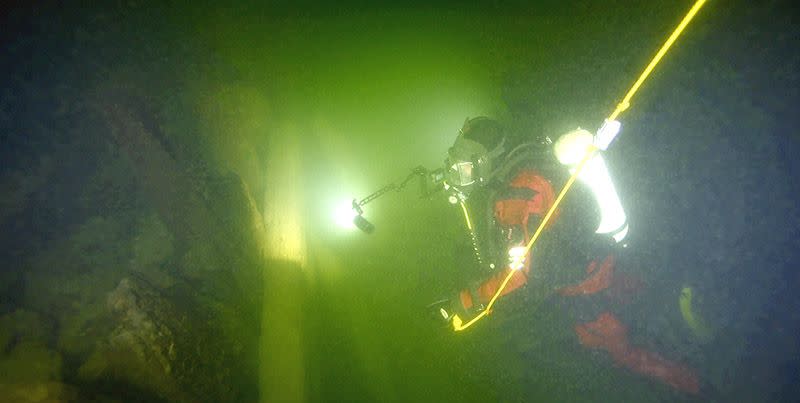Archaeologists Just Discovered a 400-Year-Old Swedish Warship Wreck. Now What?

Archaeologists found the seaworthy Äpplet warship of the 1600s near the island of Vaxholm, east of Stockholm.
Wood samples confirmed that the ship’s oak was from the same place as sister ship Vasa’ s timber, helping establish the shipwreck as Äpplet.
With age, decay, cost, and preservation difficulty, Äpplet may never be recovered.
Maritime archaeologists have located a nearly 400-year-old sunken Swedish warship, but recovering the Äpplet may prove an even tougher task than locating it.
🌊You love deep sea discoveries. So do we. Let’s explore them together—join Pop Mech Pro.
King Gustaf II Adolf ordered multiple warships during his reign. One of the most famous was the Vasa, which turned to its side and sank to the bottom of a Stockholm port within minutes of its launching in 1628. Vasa was recovered in 1961 and is the pinnacle attraction of the Museum of Wrecks in Stockholm.
Äpplet took to the water a year later in 1629. This ship, with its wider hull, proved more seaworthy and sailed for 30 years. Then Swedish leaders found an unconventional purpose for the ship, sinking it to help provide an underwater barrier for Stockholm, which was facing enemies from the sea. The city became Sweden’s chief trading port and capital in 1643.
Eventually, the location of the Äpplet was lost—until a discovery near the island of Vaxholm in December 2021, east of Stockholm.
“Our pulses spiked when we saw how similar the wreck was to Vasa,” Jim Hansson, maritime archaeologist for the museum, says in a news release. “Both the construction and the powerful dimensions seemed very familiar. The hope of finding one of Vasa’s sister ships was sparked within us.”
Divers saw that parts of the ship’s sides had fallen to the bottom of the sea, but that the hull was preserved up to a lower gun deck. The fallen sides had portholes on two different levels—evidence of a warship with two gun decks. A spring 2022 survey included dives to investigate the ship more closely, and they revealed details previously only seen in Vasa. Analysis of the Äpplet’s oak indicated that it was felled in 1627 in Malardalen, the same as Vasa’s timber previously.
“The dimensions, construction details, wood samples, and archival material all pointed in the same direction—amazingly, we had found Vasa’s sister ship Äpplet,” Patrik Höglund, maritime archaeologist at the museum, says in the news release.
Höglund says studying the Äpplet can help researchers understand how large warships evolved, from the unstable Vasa to seaworthy behemoths that controlled the Baltic Sea. This maritime machinery was a key factor in Sweden’s power in the 1600s.
Researching the sunken Äpplet may not be as simple as checking it out at the Museum of Wrecks. The ship may remain in the Baltic Sea near Vaxholm due to the cost and difficulty of recovering the wreck.
Being submerged for over 350 years—not to mention partially destroyed—the complexities of bringing Äpplet to the surface abound. And once raised, the issues don’t easily subside.
It can cost millions of dollars just to dive in and around a wreck to determine the best way to potentially bring it up. Layers of difficulty are added with potentially brittle pieces of timber, which have grown heavier with years of being underwater, serving as a home to marine life. Even if crane technology allows the ability to reach and remove pieces of the ship without further damaging its historical elements (a big if), the work isn’t over once the ship hits air.
Vasa serves as a study in preservation, with iron and metal nails acidifying and seeping into the wood. Timber ships swollen with water must be carefully cared for as soon as they reach the surface. When the wood starts to dry, it can ruin the timber. There are reports of sunken wooden vessels turning to dust the very day they were removed from an underwater home. Preservationists have a batch of chemicals on hand, often polyethylene glycol, to help keep the wood intact.
All the question marks surrounding recovery means the museum must decide what’s best for the future of the shipwreck. “The find is also valuable for those who want to uncover a new piece of exciting history through the old ship,” Hansson says. “Äpplet is part of our cultural heritage.”
You Might Also Like
